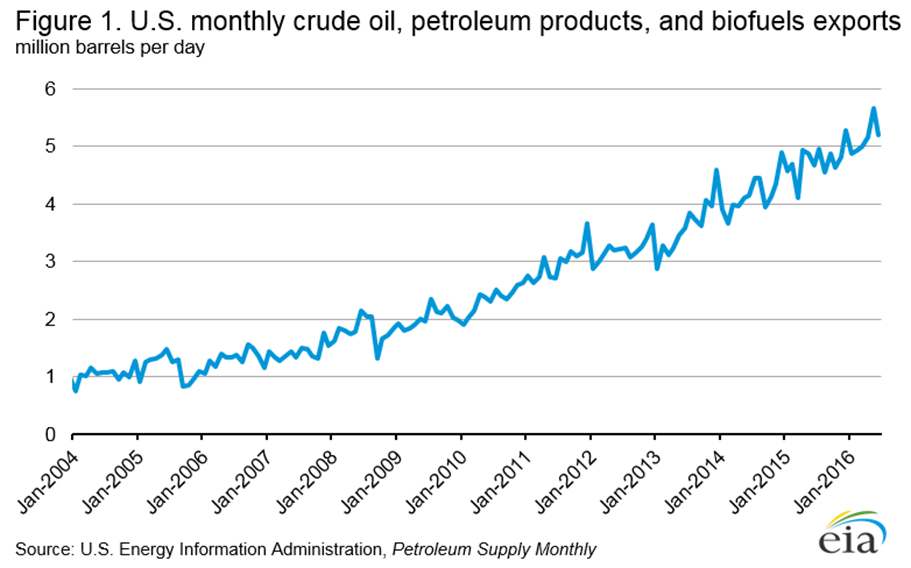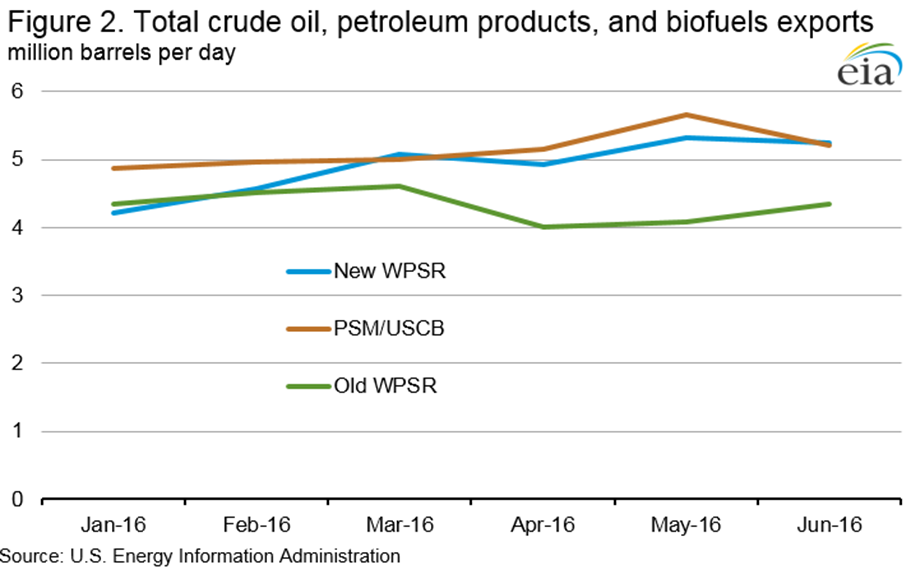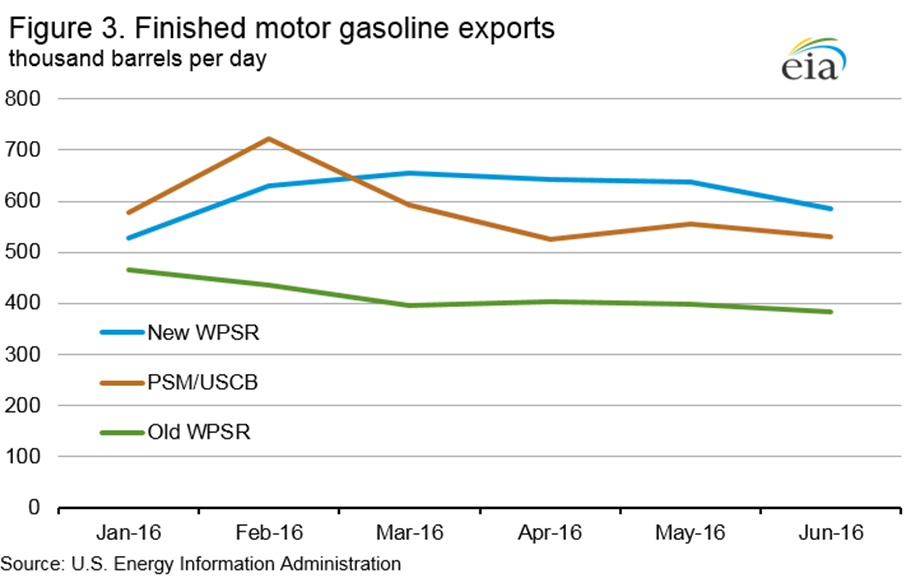
U.S. ENERGY INFORMATION ADMINISTRATION
WASHINGTON DC 20585
FOR IMMEDIATE RELEASE
August 31, 2016
EIA now using near-real-time export data to provide better weekly petroleum consumption estimates
Starting with today’s release of the Weekly Petroleum Status Report (WPSR), EIA is now publishing weekly export and petroleum balance estimates based on near-real-time export data provided by U.S. Customs and Border Protection (CBP).
EIA, which collects weekly data on inventories, refinery and blender net production, and imports but does not collect weekly export data, had previously relied on weekly export estimates based on monthly official export data published by the U.S. Census Bureau (USCB) roughly six weeks following the end of each reporting month.
With the growing volumes and volatility in exports, the use of near-real-time export data should reduce differences between EIA's weekly and monthly data. The monthly data that EIA publishes 60 days after the end of each month are based on EIA's comprehensive monthly survey data and the actual USCB export data for that month.
"By using this near-real-time data, EIA is able to provide more accurate market balances and a clearer picture of the weekly consumption of key petroleum products in the United States," said EIA Administrator Adam Sieminski.
Export data are an important component for the calculation of EIA’s weekly estimates of U.S. consumption of petroleum products. EIA calculates U.S. consumption (measured as product supplied) for petroleum products as:
Consumption = Production + Imports - Stocks Change - Exports.
U.S. exports of crude oil, petroleum products, and biofuels, which increased from 1 million barrels per day (b/d) in 2004 to nearly 5 million b/d in 2015, have become a more critical component for market assessment and calculation of U.S. consumption of key petroleum products such as gasoline and distillate (Figure 1). Given the growth and increased variability of exports, EIA has for several years been pursuing access to more timely export data for use in its weekly petroleum balance estimates.

The recent acceleration in export growth has highlighted the need for better weekly export estimates. Over the first six months of 2016, comparisons between the EIA weekly export estimates using the prior approach and EIA's Petroleum Supply Monthly (PSM) data that incorporate the actual export data published by USCB show that the EIA weekly estimates recently underestimated total crude oil, petroleum, and biofuel exports by an average of 16%. Testing conducted by EIA shows that application of the new methodology using near-real-time data from CBP significantly reduces the difference between weekly estimates and the actual data for total exports shown in the PSM during the first half of 2016.
The difference between the old and new methodologies differs across individual products, with the new methodology providing a particularly significant improvement in the estimate of finished motor gasoline exports for the first six months of 2016.
While the new weekly export methodology should provide improved weekly petroleum consumption estimates, there still may be differences between the weekly and monthly balances. The USCB is able to validate data with export filers directly while EIA processes the raw CBP data and adds estimates for data not reported by CBP.
In addition, there will continue to be minor differences between weekly sampled survey data for the nonexport categories and monthly data because of standard sampling and statistical issues. Historically, these differences have been minor, with the export data being the largest source of disconnect between the two series.


EIA Press Contact: Jonathan Cogan, 202-586-8719, jonathan.cogan@eia.gov
EIA-2016-05
